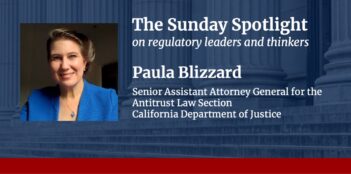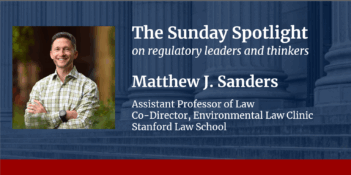
Expert argues that suits under California’s environmental law undercut housing and climate change goals.
California is experiencing a shortage in affordable housing.
In Los Angeles, for example, the median price for a single-family home recently hit a new record high of $575,000. At that price, a household would need to earn over six figures to reasonably afford a home.
With California expected to increase its population by over 10 million by 2050, the state’s housing affordability crisis seems likely only to get worse. In a recent paper, Jennifer L. Hernandez, a partner at the San Francisco office of Holland & Knight, places much of the blame on the state’s environmental protection law, the California Environmental Quality Act (CEQA).
Hernandez finds that the majority of all lawsuits filed under CEQA between 2013 and 2015 targeted attempts to increase the housing supply in the state’s urban areas. This “lawsuit abuse,” she claims, inhibits the construction of new housing and undermines the state’s housing affordability and climate change goals. Hernandez urges Governor Jerry Brown and the California Legislature to amend CEQA so that the statute works toward furthering, rather than undermining, the state’s policies.
State legislators enacted CEQA in 1970—then one of the United States’s first modern environmental laws—to protect the state’s environment for future generations. CEQA requires that any project approved by government agencies evaluate the project’s environmental impacts and adopt all feasible measures to mitigate those impacts.
The law, however, failed to define what constitutes an “environmental impact.” Hernandez asserts that, because of this ambiguity, judges interpret the meaning of environmental impact to include just about anything: construction noise; the impairment of private views; and even the increase in the number of children using public schools, parks, and libraries.
It is extremely easy, Hernandez argues, to file a CEQA lawsuit and use the Act as a pretext to stop projects. Hernandez explains that, for a modest filing fee, anyone can file a CEQA lawsuit against a project by alleging that the approving agency made a mistake in evaluating any of the nearly 100 impact issues that CEQA addresses.
When a court finds that a government agency did make a mistake in its environmental review, judges most commonly invalidate the entire project approval, Hernandez notes. To move forward after a judge’s ruling, she argues, agencies often have to redo the extensive and expensive review process.
Including the possibility of appellate review, Hernandez finds, a CEQA lawsuit can delay a project by three to ten years. It is also extremely difficult, Hernandez explains, for challenged projects to secure private financing or grants.
Either through delay or through an inability to secure financing, Hernandez argues, one CEQA lawsuit can effectively halt a project.
And for the vocal minority of Californians who oppose building new housing, Hernandez claims that CEQA remains a popular and effective tool to achieve their goals. According to Hernandez, 87 percent of all CEQA lawsuits filed against physical construction projects targeted development projects within urban areas. These CEQA lawsuits significantly impact housing production in California’s population and job centers, Hernandez argues.
The Los Angeles metropolitan area contains some of the nation’s highest housing prices and largest homeless populations. Current Los Angeles Mayor Eric Garcetti has said that the biggest problem facing the city is its housing crisis. During a recent conference of California mayors, Garcetti reportedly said, “Too many people can’t afford the housing that they’re in. And too many people aren’t in housing at all.” Despite consensus from political leaders that increasing housing supply is key to solving these problems, Hernandez observes that progress has been slow, in part because of CEQA lawsuit abuse.
Hernandez calculates that 98 percent of housing-related CEQA lawsuits filed in the Los Angeles region targeted attempts to increase housing supply.
In Los Angeles alone, between 2013 and 2015, Hernandez finds that CEQA lawsuits delayed the construction of almost 14,000 housing units and a 200-bed homeless shelter.
These CEQA lawsuits, she argues, not only undermine California’s attempts to alleviate its housing crisis by increasing housing supply but also thwart CEQA’s own mission to protect California’s environment.
As part of the state’s climate change policies, California law requires transit agencies to adopt plans to facilitate the production of higher-density housing near transit corridors. Hernandez argues that increasing housing options near transit facilities encourages transit usage and decreases dependence on private automobiles, reducing the amount of greenhouse gases released into the air.
Of the challenged housing units in the Los Angeles region, Hernandez claims that nearly 70 percent were located within high-quality transit corridors. These corridors are exactly where the state’s climate and related environmental policies say housing should be located, Hernandez states.
At the end of the 2017 legislative session, Governor Jerry Brown signed 15 housing bills into law, each attempting to alleviate the housing crisis. Hernandez argues that, without reforming CEQA, lawsuit abuse will continue to undermine the state’s attempts to solve the housing crisis. Hernandez urges Governor Brown and the California Legislature to change the law so that it works to further, rather than undermine, the state’s housing affordability and climate change policies.



